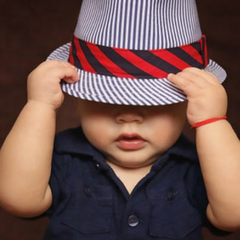
5 Simple Ways to Help Teach Children With Autism to Dress Themselves
Without a doubt, equipping your child with life skills can be challenging. The fine line between not pushing your little one into learning these abilities themselves before they are ready, and becoming too far behind age appropriate development is especially prominent when it comes to teaching your child with autism how to dress themselves.
There are a number of effortless, easy dressing solutions that you can incorporate into your daily routine. We know that there is no such thing as a one size fits all solution. However, we have gathered our top five practical tips -- from visual stimuli to adaptive clothing -- that you can apply to your current approach.
Use visual aids
It is natural to forget that getting dressed is tricky. The task alone of putting on a tee shirt is a series of intricate steps to a child. Combining this with remembering which item comes first can often lead to frustration and tears.
Visual aids are extremely powerful teaching tools. Make simple illustrated cue cards to help show the order in which you would like your child to dress. These can be used alongside verbal cues and demonstrating actions yourself or placed on the wall to independently follow; providing a step-by-step guide if they forget what comes next.
Match buttons to holes

Small hands and fiddly buttons can make the fastening of a shirt quite confusing and time-consuming. While it is reasonable to want to intervene and do it for them, there are other ways to help your child get to grip with buttons. Using a discreet mark with a fabric pen, align both sides of the shirt. Place one line next to the button and on the inside of the shirt against the edge of the buttonhole stitching. This useful hidden guideline helps your child match up the button to its hole with ease.
Create a body shape
Another visual solution would be to create a person on the floor using the clothing that you would like your child to wear. By laying the outfit as you would expect them to wear it will aid your child in imaging what goes where. You can layer underwear on top of trousers and skirts to assist with the order of which they need to put them on.
Buy autism-friendly clothing
You can purchase specialist bodysuits and other adapted clothing that uses soft and breathable fabrics. Children can wear these without feeling their outfit is itchy and tight. Other features that increase comfort is tagless items and covered elastic. Making the clothes as pleasant as possible for your child can make them more cooperative and willing to put them on.
As it is with any self-care learning; it will take time. Break each step down into manageable lessons. Remember to use these helpful suggestions with plenty of encouragement and praise.
Provide options

Some parents find the challenge with getting dressed is when their child refuses to wear the outfit chosen for them. The best way to overcome this is to allow them control of the situation. By involving them in the decision-making process and offering three choices can be a manageable way to get them onboard and dressed.
At SpecialKids.Company we stock a wide range of autism friendly clothing for children with special needs, to help you on your journey with teaching your child to dress themselves. View our full range here.

